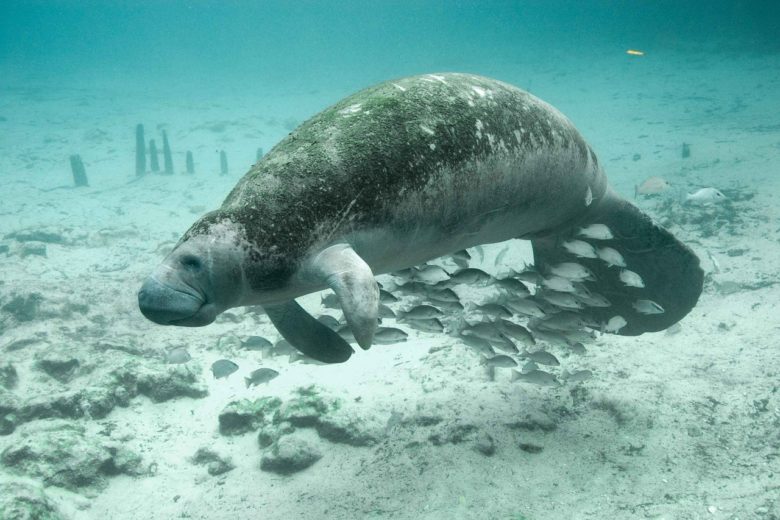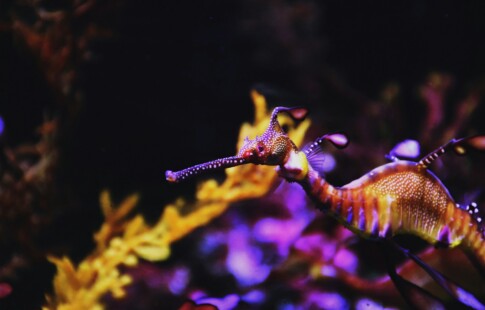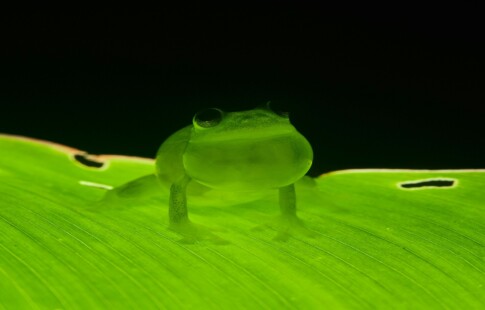
7 Tips for Knowing Sea Animals by Ocean
We are reader-supported. When you buy through links on our site, we may earn affiliate commission.
Our oceans are filled with countless unique and amazing creatures. Some can be found in waters all around the globe, while other animals by ocean live only in particular locations. And there are still many more species — such as this bizarre squid — to be found!
Here are seven sea animals by ocean who remain unique to their area of the world.
1. Galápagos Penguin
The Galápagos penguin is an endangered species native to the Pacific Ocean. With large bills and thin, white stripes that outline their face and body, they are the third-smallest type of penguin in the world. The Galápagos penguin is the only penguin to live near the Equator, farther north than any other penguin species, and they sometimes even cross into the northern hemisphere.
El Niño and other environmental changes can have drastic influences on water temperatures and the penguins’ food supply, directly influencing their population. They are sometimes affected by predators on land or in water given their small size. Galápagos penguins are also threatened by humans damaging their habitats or by getting trapped in the nets of fishermen.
2. Scorpionfish
The scorpionfish lives in the Indian Ocean and portions of the South Pacific. This fish spends its days resting in coral hiding spots, putting its astounding hunting skills to use at night. Scorpionfish are venomous and have amazing camouflage that allows them to disappear in plain sight while they wait for prey. There are more than 200 species of this fish in the world, and they can live for up to 15 years!
When scorpionfish lay their eggs, they float to the water’s surface to protect them from being eaten. Young scorpion fish then hatch near the surface where they are safer from predators, and then later swim down to the reefs when they are bigger and stronger. Scorpionfish depend on healthy coral reefs for their both their habitat and their hunting grounds.
3. Gray Seal
Gray seals are a rare species of seal living in the Atlantic Ocean. Many of them live in colonies near the United Kingdom, but they can also be found on the western side of the North Atlantic. They find their food in cooler, open water and enjoy living in locations where they will be disturbed as little as possible. Gray seals prefer to eat fish and will eat a wide variety, but they also adapt as needed and eat what is available during shortages, such as lobsters or smaller seals.
Although they breed on land, their bodies’ thick fur and blubber to allow them to stay warm in the water. Some males weigh in at more than 750 pounds! Gray seals are excellent swimmers, and while they can look somewhat clumsy when on land, they can actually move rather quickly for small distances. Hunting has affected their populations, but this has improved recently thanks to legislation aimed at their protection.
4. Manatee
Manatees, also known as sea cows, are herbivores and like to eat the greens found in and around the Atlantic Ocean. They come to the surface to breathe and go back underwater for a time to search for food — and they’re excellent swimmers! Manatees can live for more than 70 years and can weigh more than half a ton.
Babies are born underwater, and their mothers help them get to the surface for their first breaths. Typically, little ones learn to swim on their own after about 60 minutes. Manatees are most threatened by hunters, being hit by boats and getting caught in fishermen’s nets.
5. Aldabra Giant Tortoise
The Aldabra giant tortoise lives in grasslands and swamps. It is the only remaining species of tortoise in the Indian Ocean region. These tortoises can live very long lives — the record-holder supposedly lived to be 255 years old. They are also very large, the biggest weighing in at 672 pounds.
While they don’t move very quickly, Aldabra giant tortoises have a large, hard shell for protection. Their long necks and capability to balance on their hind legs allow them to rip leaves, fruits and berries from branches. Humans are the biggest threat to these tortoises, bringing in domestic animals that compete with food sources and causing habitat loss through development.
6. Polar Bear
Polar bears, who live in the Arctic, are very strong swimmers and thrive on seals to survive. Males are active year-round, but females dig dens to hibernate and have their cubs in the winter. Their cozy hiding places can actually be up to 40 degrees warmer than the outdoor temperature!
Polar bears and other animals from the Arctic region are particularly affected by global warming and other threats introduced by human beings. As their habitats change at unprecedented rates, their entire ecosystem is under constant threat. Food sources disappear due to habitat loss, causing malnutrition and starvation in polar bears. This impacts breeding, as unhealthy bears have less healthy cubs.
7. Macaroni Penguin
While there are a number of penguin species found in the Antarctic, the macaroni penguin stands out with its colorful appearance. Most active during the day, they are adept swimmers that spend their winters searching for fish and summers heading inland to breed.
Nearly 6.3 million pairs of breeding macaroni penguins exist today. Unfortunately, the population has dwindled over the past 30 years and faces the vulnerability of extinction. People have introduced predators like cats to their environment, and overfishing has greatly affected their food supply. Oil spills are also a threat to their health and well being.
Animals by Ocean Worth Protecting
These seven animals are only a few of the vast number of animals by ocean that we have — you could spend a lifetime trying to learn about each of their unique traits and abilities. Who knows what we’ll find next! Protecting the irreplaceable habitats of these special creatures is critical to their survival for generations to come.
Share on
Like what you read? Join other Environment.co readers!
Get the latest updates on our planet by subscribing to the Environment.co newsletter!
About the author

Jane Marsh
Starting from an early age, Jane Marsh loved all animals and became a budding environmentalist. Now, Jane works as the Editor-in-Chief of Environment.co where she covers topics related to climate policy, renewable energy, the food industry, and more.





